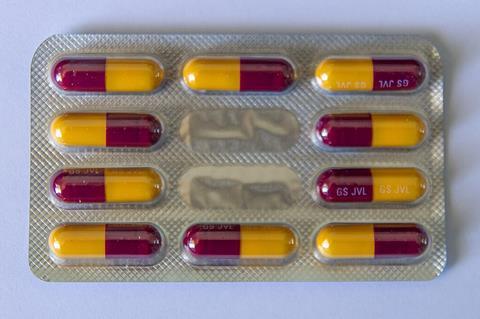A Cornell University-led collaboration has uncovered the equipment that enables bacteria to survive exposure to antibiotics: a shuttling mechanism that helps a complex of proteins pump out a wide spectrum of antibiotics along with other physiological substrates from the cell.

Now that the mechanism has been identified, the researchers are using chemical and mechanical manipulations to disrupt the process, so that antibiotics can work unimpeded.
The research, published in Cell Reports Physical Science, was led by Peng Chen, professor of chemistry. Co-lead authors are Wenyao Zhang, Ph.D. ’23, and Christine Harper, Ph.D. ’22.
Specific bacterial membrane pump
Some bacteria are more resistant to antibiotics than others, with so-called gram-negative bacteria being particularly resilient because they have an extra membrane to armor themselves. They also have a sophisticated plumbing system in the form of a three-part protein complex – MacAB-TolC – that spans the cell’s inner and outer membranes, as well as the periplasm that connects them. Each of the three key proteins occupies a different location: TolC on the outer membrane, MacB on the inner membrane and MacA in the periplasm, although it is anchored on the inner membrane.
This “tripartite” protein complex, also known as a multidrug efflux pump, forms a conduit that drains out not only antibiotics but also virulence factors – i.e., molecules that are produced by the bacterial cell itself and can infect or otherwise compromise its host.
READ MORE: Efflux pumps conferring antibiotic resistance found in archaea for the first time
READ MORE: Researchers discover method to overcome antimicrobial resistance
In order to pump out toxins, the three proteins need to assemble in a specific stoichiometry, or chemical balance. Two MacB proteins assemble with six MacA proteins, then three TolC proteins. That ratio has been well understood, but researchers have wondered, once the structure is assembled, how molecules in the periplasm enter the channel that runs through the complex and through which different types of substrates they get pumped.
Protein interactions within the complex
Chen’s team used single-molecule imaging on E. coli bacterial cells to better understand the protein interactions. When they measured the protein concentration inside the cell, they found the stoichiometry was actually imbalanced, with a surplus of MacBs floating around (and even more TolC, known from previous studies), far more than were necessary for the complex’s 2:6:3 configuration. On top of that, researchers noticed the adaptor protein MacA could disassemble from the MacAB-TolC assembly.
“You basically have these extra Bs that don’t have A partners to assemble. And of course, the cell does not do this for no reason,” Chen said. “We found out a good reason is that when you have this extra B, because it does not have A associated with it, it naturally has an opening for the substrate to go in. So once the substrate can bind to the extra B, some of the A’s that are initially associated with B can migrate over to assemble. And once it’s assembled, they can pump the substrate out.”
Disrupting the pump structure
To test if the mechanism could be interrupted, Chen’s group collaborated with a team at the University of California, San Francisco, led by former Cornell professor Christopher Hernandez, who developed a microfluidic device that can change an individual bacteria’s toxin resistance by applying mechanical stress.
The researchers determined that squeezing E. coli through the device deformed the cell enough to disrupt the assembled complex and prevent it from resisting antibiotics.
After establishing the connection between lopsided protein stoichiometry and cellular function, Chen is now curious to explore how that relationship applies to other systems.
“This imbalance of protein stoichiometry must exist for many types of protein complexes. But how does a cell utilize this imbalance? I don’t think people realize this sufficiently,” Chen said. “Now we have one example that shows this particular imbalance might be, functionally, very relevant. So anytime that we study protein complexes in the cell, we always want to measure the relative amount in the entire cell versus their relative amount in a particular complex. Do they actually match?”







No comments yet